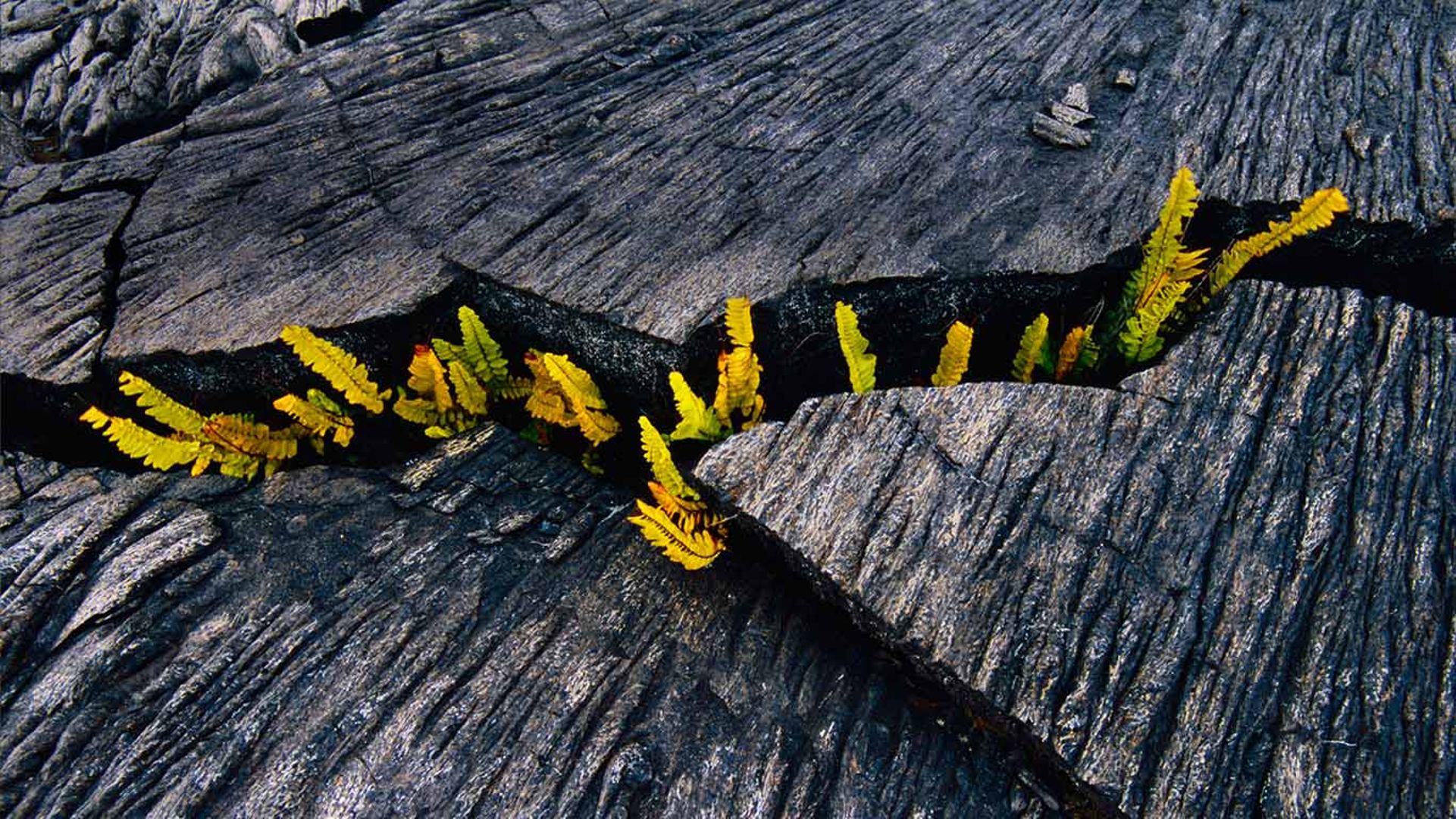Sometimes our environment seems harsh. We fear that the new ideas we plant in this organization/economy/culture – and especially in schools – aren’t likely to survive.
And yet, every day, a seemingly unlikely innovation seems to take root and gather momentum. How does this happen?
We’re told that success follows a special quality of the idea, or the founder, but the real magic is in the conditions that make growth possible. Good news: optimal growth conditions aren’t unique to someone else. We’re living in the same environment.
If you know where to look, you can find the information, the people, and the resources that can help you survive and thrive.
Thirty years ago I was walking the Halema’uma’u Trail down into Kīlauea Caldera on the big island of Hawaii. I can’t retrace my steps in Volcanoes National Park – Pele has spoken and the trail is closed – but there is one image from that hike that will stay with me forever.
The air felt good, and the sky was unmistakably South Pacific beautiful, but the surface of the volcano was pure Mordor. The sharp, black lava tore the soles of my hiking boots to shreds.
I was just about to turn around and head back when a sprig of bright green caught my eye in a crevice, about three or four feet below the surface of the trail, far from any visible source of life support…
A tiny fern.
If you know where to look, you can find the information, the people, and the resources that can help you survive and thrive.
We are inspired when life finds a way against seemingly impossible odds. There’s a reason the book was called A Tree Grows in Brooklyn.
But the fern wasn’t a motivational speaker or an Olympic human interest story. It didn’t even really conquer obstacles or do anything special. In fact, the fern was a perfectly average product of environmental factors that do this sort of thing all the time.
I would have known this had I read Chapter 2 of the National Park Service Scientific Monograph Number Five, Invasion and Recovery of Vegetation after a Volcanic Eruption in Hawaii by Garrett A. Smathers and Dieter Mueller-Dombois, who cite Robyns and Lamb (1939) in describing the first step of primary succession in the Kilauea region: “Invasion of cracks in the new flow by ferns and flowering plants are common to the adjacent area, and supported by nonvascular cryptogams especially on the a’a lava.”
Way back in 1939, Robyns and Lamb understood that the fern depended on the moisture – the climate – more than the surface on which it grew.
But I was ignorant. (Who reads Chapter 2 of the National Park Service Scientific Monograph Number 5? Who are Robyns and Lamb?) So there I stood, staring at the fern like it just landed from outer space and deadlifted 900 lbs.
What does any of this have to do with innovation in today’s world?
Defining ourselves in the physical world limits our imagination. If you want to create opportunities or solve problems, if you want to create and bring things into the world that don’t yet exist, you’re going to need more than you have where you live, attend school, or work.
Think digital.
If you’re reading this (or driving a late model car, or talking to inanimate objects that talk back, or doing a thousand other things we associate with daily living in 2021), you’re connected to the internet.
If you’re connected to the internet, you inhabit a dynamic, occasionally volatile environment that contains everything you need to grow. Information. People with whom you can connect and collaborate for support, critique, and mentorship. Media that empower you to curate, remix, and webcast content.
The internet is your volcano. It’s sharp. It might erupt at any time. But it’s got all the nonvascular cryptogams and other stuff you need.
See the internet for the generous greenhouse it is. Use it to find and learn what you need to bring your ideas to life.
The ways you’ll thrive will impress everyone who sees you – especially those who don’t yet realize that the environment favors creativity, critical thinking, collaboration, and growth.
Be the fern.
